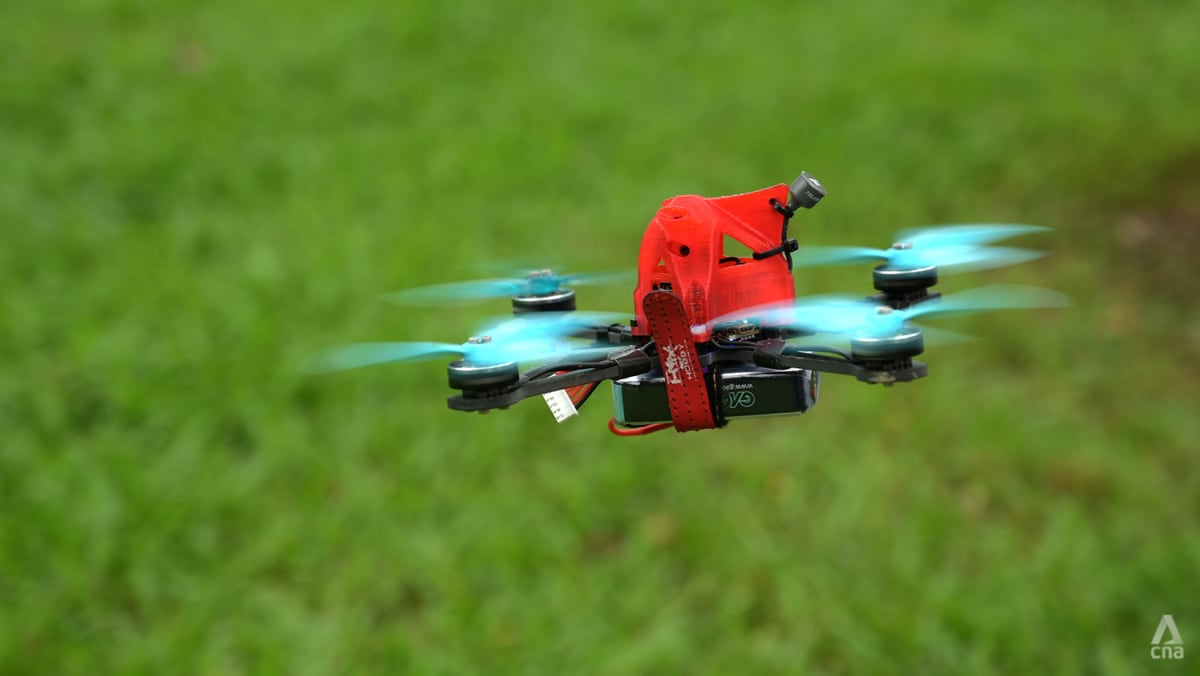Keeping an eye on volunteers from a community group who were picking away at towering piles of clutter in her home last Friday (Jan 24), one elderly woman watched as they sorted out usable items from the mess of expired food, broken appliances and old magazines.
Barely an hour after they began cleaning up her three-room flat in Ang Mo Kio, the volunteers and staff members from Habitat for Humanity Singapore nearly filled up a green trash bin that the estate’s town council placed along the common corridor.
However, the woman started sifting through the bin’s contents as the volunteers took out more clutter to be junked. She pulled out a magazine wrapped in a plastic pouch and showed it to this reporter.
“It’s still fine, I can still use the pouch … What if I need it? It still looks new,” she said. The magazine was dated December 2002.
She then emptied the contents of the pouch into the bin, including the magazine and what appeared to be cockroach droppings. She allowed CNA TODAY into her home on condition of anonymity.
When a social worker was referred to her last year, the main door to her home could barely be opened as her ceiling-high possessions obstructed the entrance.
In order for her to move around her flat, she needed to climb over the items. Her items took up most of her bed, relegating her to a small spot on the queen-size bed.
Often misconstrued as being stubborn or lazy, hoarders like her have various reasons for their behaviour. This can range from emotional trauma to underlying mental health problems to social isolation, and it differs from person to person.
This is why helping them overcome the hoarding disorder, which is a mental health condition, is not as simple as entering a home and throwing away items. This was what volunteers, social workers, mental health professionals and community groups told CNA TODAY.
Instead, it is a long-drawn process that can take years of befriending and convincing hoarders to open their homes and hearts.
Mr Low Mun Heng, a principal social worker at social service agency Allkin Singapore’s care and integration division, said: “Some cases may take three to six years of consistent intervention before they show substantial improvement. Others might never reach what we conventionally consider ‘resolved’.”
Just last month, three people died after a hoarder’s home in Hougang was engulfed in flames. Due to the clutter, firefighters had difficulty entering the residential unit, the Singapore Civil Defence Force said on Facebook.
With Singapore’s ageing population and shifting demographics, the number of hoarding cases is expected to rise, the Ministry of National Development (MND) and Ministry of Social and Family Development (MSF) said in a press release on Jan 22.
To date, there are 627 hoarding cases are being monitored by the Hoarding Management Core Group (HMCG), an inter-agency group to address hoarding in Singapore. Of these, 270 cases have shown improvement and 357 are unresolved because the hoarders are unwilling to cooperate with decluttering efforts.
To better coordinate hoarding management efforts across Singapore, MND and MSF launched the New Environment Action Team (NEAT) on Jan 22, which brings together government agencies, community groups and private organisations to tackle the phenomenon together.
In the meantime, volunteers and social workers told CNA TODAY that it remains an uphill fight to attend to each hoarding case, because every case has different underlying causes that need to be addressed, and social isolation and shame make it difficult for hoarders to accept help.
MONTHS AND YEARS OF PERSUASION
One of the biggest challenges that social workers and community groups face happens at the beginning. It is not easy to convince hoarders that they have to clean up their homes and that help is available for them to start decluttering.
It is also difficult to persuade them to accept help for the underlying reasons of their hoarding tendencies, because these are often tied to social or psychological factors.
Social workers and staff members also said that its difficult to define if a home is just messy or can be considered a case of hoarding, especially if they lack access to the home and can attend to the situation only from the flat’s front gate. Sometimes, hoarders will insist that their homes are simply messy.
To this, Singapore uses the Clutter Image Rating Scale, an international standard that determines the severity of the hoarding situation.
The scale ranks a series of nine pictures of a cluttered home. Most countries consider that any clutter above four on the scale would affect the resident’s quality of life.
Mr Koh Chee Wai, assistant director at the Singapore Association of Mental Health, said: “Many hoarders are socially isolated and may resist help due to feelings of shame or fear of being judged.”
Mr Kok is part of the association’s Mobile Support Team that provides mental health support through home visits, among other assistance.
He added that hoarders also struggle to seek help because they might be in denial, are stigmatised for their behaviours or are overwhelmed by the task of removing years of clutter.
Government agencies can issue orders or take enforcement action against hoarders if their homes’ clutter breaches any established rules and laws. For example, the National Environment Agency can order hoarders to remove items that contribute to pest infestations.
Just last November, parliament passed a Bill allowing officers from the government’s Community Relations Unit to address noise and hoarding complaints that create severe “disamenities” and forcibly declutter the home.













